Mysterious Ancient Ruins Of Engaruka – Why Was The Site Abandoned?
Ellen Lloyd - AncientPages.com - Located in the Great Rift Valley of northern Tanzania, today there are nothing but ruins left of what was once an Iron Age farming community.
Researchers have tried to unravel the mystery of why people living in Engaruka abandoned the site centuries ago. The ancient ruins of Engaruka remind us of how vulnerable our world is to climate changes.
What once may have been one of the biggest inland centers in eastern Africa is now a quiet corner of Tanzania.
Engaurka is considered one of the most important archaeological sites in the Great Lakes region. Today it is a dry, dusty, and sterile place, but it was once a vast irrigated landscape.
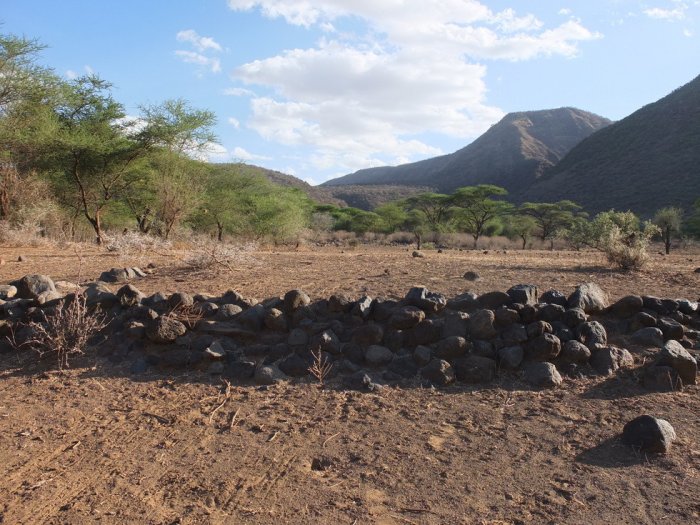
An abandoned terrace. Image credit: Pardee Wamsley - Atlas Obscura
The site has long been a mystery to archaeologists. Who were the inhabitants of Engaruka? How did they develop such a sophisticated farming system and why did they suddenly abandon the site?
The mysterious ruins of Engaruka were discovered in 1883 by Dr. Gustav Fischer, a German explorer of Africa. Dr.Fischer said they resembled tumbled-down walls of ancient castles. Later, in 1896, Drs Scoeller and Kaiser mentioned the ruins of "Ngaruku" including great stone circles and dams. It was not until 1913 that an archaeological survey took place in the region, but the lack of burial sites made it very difficult to determine who created Engaruka.
Modern archaeologists assume that Engaruka was built by ancestors of the Iraqw, a Cushitic-speaking ethnic group inhabiting the Great Lakes region of East Africa. They live in the Arusha and Manyara regions of north-central Tanzania, near the Rift Valley wall and south of Ngorongoro Crater.
The modern Iraqw practice an intensive form of self-contained agriculture that bears a remarkable similarity to the ruins of stone-walled canals, dams and furrows that are found at Engaruka.
See also:
10 Great Ancient Mysteries Of Africa
Researchers from the University of York have been working in East Africa for many years gathering palaeoecological and archaeological evidence on how people interacted with this environment. They think Engaruka was abandoned because of climate change.
"Previous researchers have tended to assume that the people of Engaruka failed to make the land work for them, but the archaeological and environmental data demonstrate that this was a complex farming system that was sustained for well over 300 years,” Dr Daryl Stump from the University of York said.
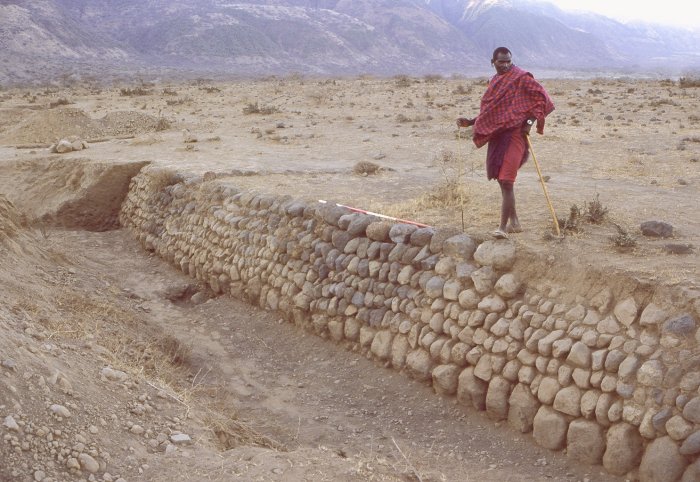
Excavated stone-lined water channel, Engaruka. Image credit: Daryl Stump
Scientists have been able to confirm that Engaruka once had irrigation systems supporting 20 square kilometers of farmland and more than half the fields built by capturing soils carried off the mountainside by water flowing within the rivers and streams.
In a documentary called Grains of Truth, researchers bring together some of the images and footage that the team has gathered over the years and explains how evidence for landscape change in the past can help us to predict and cope with the future of climate change.
In this documentary researchers at the University of York’s Departments of Archaeology and Environment reveal their investigations in Engaruka, a semi-arid savannah region in Tanzania, East Africa.
The unpredictable environment means that people cannot depend entirely on their livestock to sustain them, so they use water management to grow crops on a limited scale. Archaeological evidence, however, is showing that what now appears to be mostly dry, dusty and sterile, was once a vast irrigated landscape. But by the early 1800s, European explorers discovered no evidence of people in the region. Where did they go? Why did the environment no longer support them?
The ruins of Engaruka talk volumes about the highly specialized agricultural economy, but they also show the effects of climate change and pressures on environmental resources.
From an archaeological perspective, Tanzania still remains a rather unexplored region of the world. The Olduvai Gorge is a steep-sided ravine in the Great Rift Valley that stretches through East Africa. It is located in the eastern Serengeti Plains in northern Tanzania.
The gorge is a very important prehistoric site for the study of human evolution. Millions of years ago, volcanic eruptions set down the rocks and layered ash that would become Olduvai Gorge. Volcanic ash and lava layers are dated to the last 2.1 million years of geological and evolutionary history.
The oldest hominid fossils have been recovered from several sites in East Africa and Olduvai Gorge is one of these sites.
Written by Ellen Lloyd – AncientPages.com
Copyright © AncientPages.com & Ellen Lloyd All rights reserved. This material may not be published, broadcast, rewritten or redistributed in whole or part without the express written permission of AncientPages.com and Ellen Lloyd
About the author:
Ellen Lloyd – is the owner of AncientPages.com and an author who has spent decades researching ancient mysteries, myths, legends and sacred texts, but she is also very interested in astronomy, astrobiology and science in general.
Expand for references
More From Ancient Pages
-
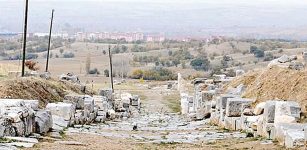 Ancient Pisidia Antiocheia – Excavations In An Important Center Of Early Christianity
Civilizations | Sep 27, 2015
Ancient Pisidia Antiocheia – Excavations In An Important Center Of Early Christianity
Civilizations | Sep 27, 2015 -
 On This Day In History: Macbeth, King of Scots Killed At The Battle Of Lumphanan – On August 15, 1057
News | Aug 15, 2016
On This Day In History: Macbeth, King of Scots Killed At The Battle Of Lumphanan – On August 15, 1057
News | Aug 15, 2016 -
 Early City Planning In The Kingdom Of Judah Examined
Archaeology | Jul 5, 2023
Early City Planning In The Kingdom Of Judah Examined
Archaeology | Jul 5, 2023 -
 Controversial Theory Suggests Atlantis Was In Scandinavia – Surprising Evidence Presented By Ancient Writer
Ancient Mysteries | Sep 5, 2018
Controversial Theory Suggests Atlantis Was In Scandinavia – Surprising Evidence Presented By Ancient Writer
Ancient Mysteries | Sep 5, 2018 -
 Battle Of Visby – Death Came With King Atterdag’s Ships
Featured Stories | Jul 27, 2022
Battle Of Visby – Death Came With King Atterdag’s Ships
Featured Stories | Jul 27, 2022 -
 Ankhesenamun – Mysterious Death Of Tutankhamun’s Wife Ended The True Amarna Bloodline
Featured Stories | Mar 23, 2018
Ankhesenamun – Mysterious Death Of Tutankhamun’s Wife Ended The True Amarna Bloodline
Featured Stories | Mar 23, 2018 -
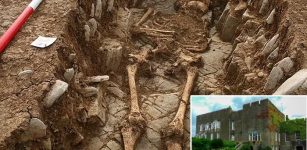 Mysterious Medieval Cemetery In Wales With People Buried In Unusual Positions Puzzles Archaeologists
Archaeology | Jan 3, 2024
Mysterious Medieval Cemetery In Wales With People Buried In Unusual Positions Puzzles Archaeologists
Archaeology | Jan 3, 2024 -
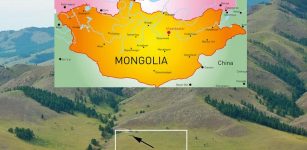 Modern Humans Traveled Across The Eurasian Steppe 45,000 Years Ago
Archaeology | Aug 20, 2019
Modern Humans Traveled Across The Eurasian Steppe 45,000 Years Ago
Archaeology | Aug 20, 2019 -
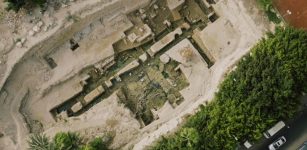 New Hope To Finally Find Tomb Of Alexander The Great
Archaeology | Mar 6, 2019
New Hope To Finally Find Tomb Of Alexander The Great
Archaeology | Mar 6, 2019 -
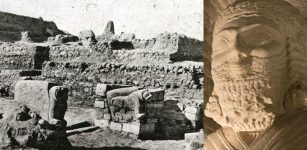 Arslantepe Mound – Home To The Oldest City-State Of Anatolia
Featured Stories | Jun 7, 2022
Arslantepe Mound – Home To The Oldest City-State Of Anatolia
Featured Stories | Jun 7, 2022 -
 On This Day In History: One Of The Tallest Women In History – Died – On August 5, 1888
News | Aug 5, 2016
On This Day In History: One Of The Tallest Women In History – Died – On August 5, 1888
News | Aug 5, 2016 -
 Mysterious Ancient Tomb May Contain Remains Of A Powerful Forgotten Goddess
Ancient Mysteries | Aug 30, 2018
Mysterious Ancient Tomb May Contain Remains Of A Powerful Forgotten Goddess
Ancient Mysteries | Aug 30, 2018 -
 Why Did Ancient Romans Cut Off Their Thumbs?
Ancient History Facts | Mar 2, 2020
Why Did Ancient Romans Cut Off Their Thumbs?
Ancient History Facts | Mar 2, 2020 -
 On This Day In History: Roman Emperor Caligula Was Born – On August 31, 12 AD
News | Aug 31, 2016
On This Day In History: Roman Emperor Caligula Was Born – On August 31, 12 AD
News | Aug 31, 2016 -
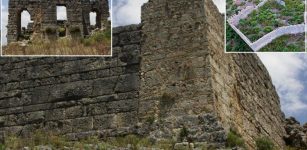 3,000-Year-Old City Of Sillyon That Alexander The Great Failed To Conquer
Archaeology | Aug 31, 2020
3,000-Year-Old City Of Sillyon That Alexander The Great Failed To Conquer
Archaeology | Aug 31, 2020 -
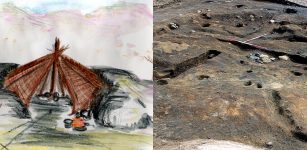 Stone Age People Lived In Reused Houses – Not Just Caves – Discovery In Norway Reveals
Archaeology | Jan 26, 2018
Stone Age People Lived In Reused Houses – Not Just Caves – Discovery In Norway Reveals
Archaeology | Jan 26, 2018 -
 3,000-Year-Old Geoglyphs May Depict The Heavens
Archaeology | Jun 25, 2018
3,000-Year-Old Geoglyphs May Depict The Heavens
Archaeology | Jun 25, 2018 -
 Summer Solstice Festivals Around The World – Midsummer Celebration Is An Ancient Tradition Still Alive
Ancient Traditions And Customs | Jun 21, 2024
Summer Solstice Festivals Around The World – Midsummer Celebration Is An Ancient Tradition Still Alive
Ancient Traditions And Customs | Jun 21, 2024 -
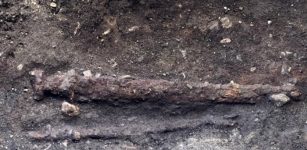 Viking Sword Unearthed In Grave Excavated by Archaeologists In Central Norway
Archaeology | Aug 27, 2020
Viking Sword Unearthed In Grave Excavated by Archaeologists In Central Norway
Archaeology | Aug 27, 2020 -
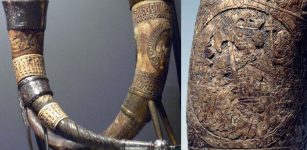 Ancient Icelandic Drinking Horn Reveals An Interesting Story About Saint-King Olaf
Ancient Traditions And Customs | Mar 29, 2017
Ancient Icelandic Drinking Horn Reveals An Interesting Story About Saint-King Olaf
Ancient Traditions And Customs | Mar 29, 2017

